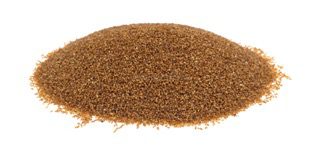

While teff is generally safe for dogs to consume, it is important to note that it can cause allergies in some dogs. However, teff is a good source of iron and calcium, making it a nutritious option for your furry friend.
Teff is a cereal grass that contains essential amino acids and protein, which are necessary for muscle development and tissue repair in dogs. Additionally, teff is rich in vitamins and minerals, including B vitamins, vitamin C, calcium, iron, and zinc, which can boost the immune system and regulate organ functions. Its high resistant starch content also helps regulate blood sugar, control weight, and maintain colon health. Furthermore, teff is gluten-free, making it a suitable option for dogs with gluten intolerance.
Dogs with grain allergies may experience allergic reactions to teff. Additionally, teff contains phytic acid, which can prevent nutrient absorption.
It is important to serve teff in moderation and occasionally as it is a carbohydrate and should not make up the majority of your dog’s diet. Quality meat-based protein should be the main source of your dog’s diet. Teff flour can be used to make dog treats and snacks.
Teff, also known as lovegrass, is a cereal grass that is a good source of iron and calcium. It is commonly eaten in Ethiopia and Eritrea, but has now become more accessible in other parts of the world. Teff contains essential amino acids and protein which help with muscle development and tissue repair in dogs. Plus, it is gluten-free, making it a great alternative for dogs with gluten intolerances. However, it should be noted that teff can cause allergies in some dogs and contains phytic acid, which can prevent nutrient absorption. When serving, make sure to do so in moderation. Teff flour can be used to create dog treats and snacks. Two alternatives to teff could be quinoa or brown rice. Have you tried feeding your dog teff before? If so, how did they like it? Remember to always consult with your veterinarian before introducing new foods into your dog's diet.